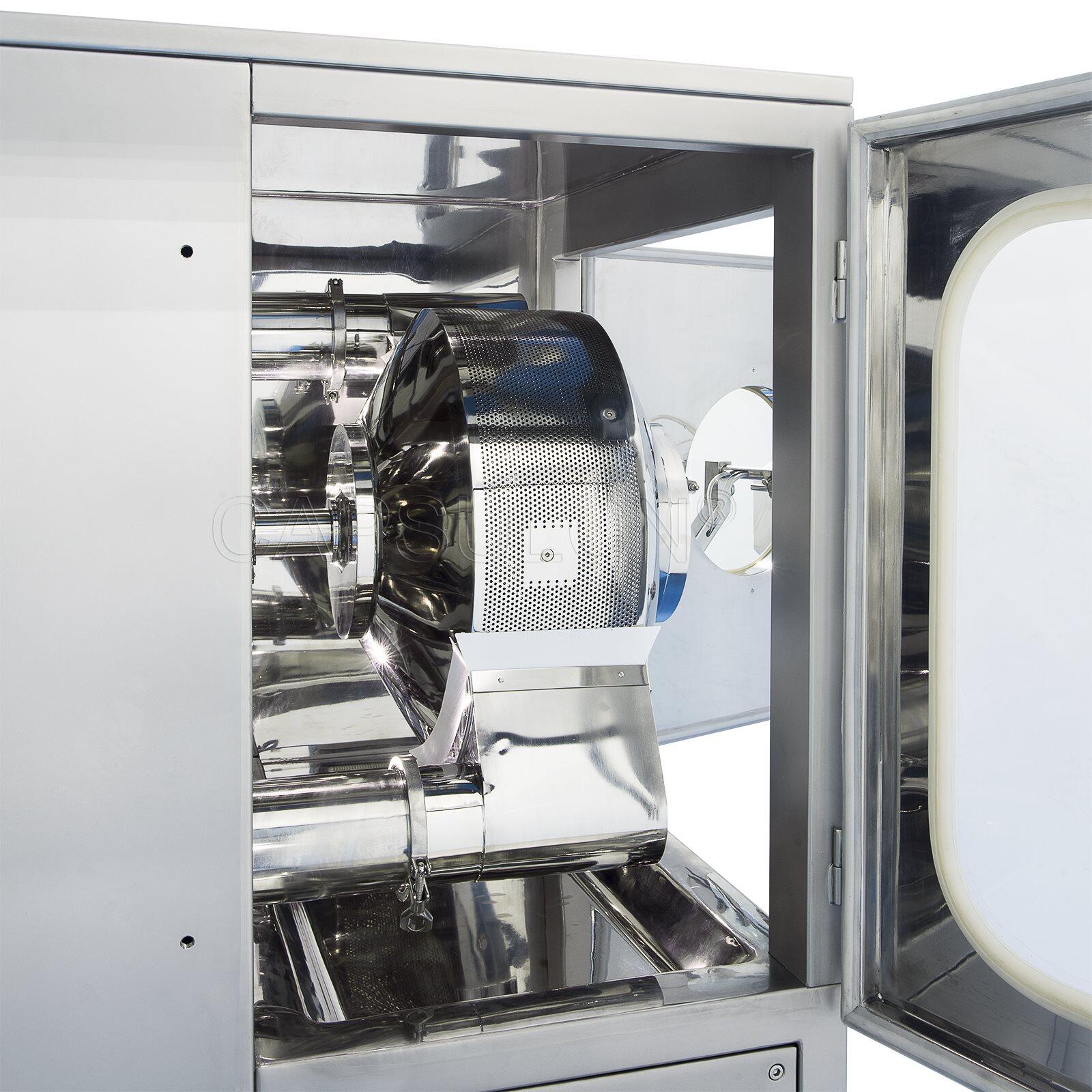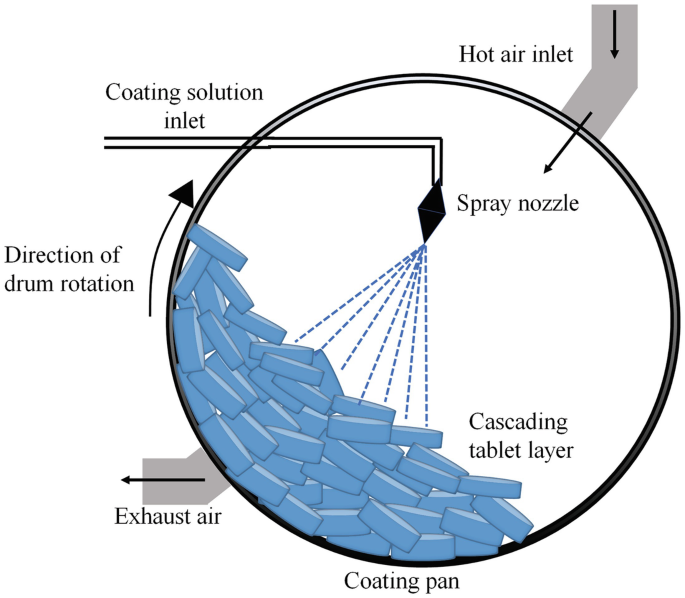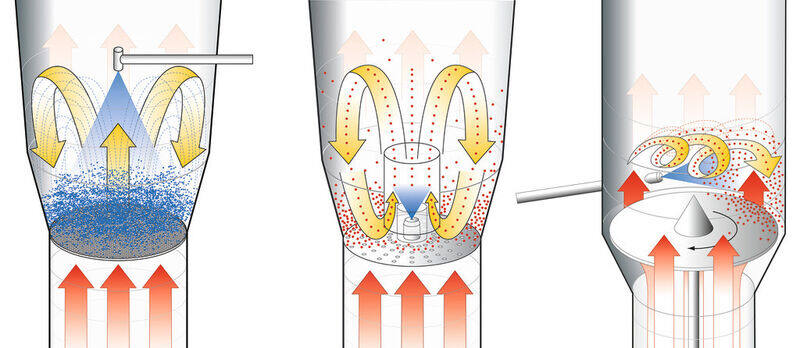Demystifying the Tablet Coating Machine Principle
Have you ever wondered how those small, shiny, and colorful tablets are made? The secret lies in a process called tablet coating. This process is done to achieve a variety of functional and aesthetic properties for the tablets. As a critical step in modern pharmaceutical manufacturing, the tablet coating process is typically performed by specific equipment - Tablet Coating Machines.

So, how do these machines work to ensure your tablet's efficacy, safety, and patient compliance? In this blog post, we will explore the tablet coating machine working principle. Whether you are a student or a practitioner in the pharmaceutical industry, this article will provide you with a comprehensive overview of tablet coating machines, their types, and their principles. Let's dive right in!
What Is A Tablet Coating Machine?
The tablet coating process involves creating a thin layer of material that wraps around the tablet core. The formed coating can protect the drug from environmental factors, improve its appearance, taste, or odor, or control its release rate.
Yet, the coating process can be labor-intensive and time-consuming if done manually. So, tablet coating equipment was invented. This type of machine is designed to automate and standardize the coating process. It can handle a large volume of tablets in a short time, ensuring consistent quality and efficiency.
Tablet Coating Machine Working Principle
Understanding the tablet coating machine principle allows you to produce high-quality products consistently. Also, it helps reduce the manufacturing cycle time and cost.
If you're looking for a tablet coating machine, you will find this type of equipment comes in many different types and configurations. Some of the common types of tablet coating machines include coating pans and fluidized bed coaters. Let's check them out!
How Does a Coating Pan Machine Work?
Coating pans are widely used in the pharmaceutical, nutraceutical, and food industries. This type of tablet coating equipment is also available in different types, including:
Standard Coating Pan

Perforated Coating Pan

Both coating pan machines are typically fabricated from stainless steel. The primary difference between standard coating pans and perforated coating pans is the design of the pan surface. If you want to learn more about tablet coating machine construction, feel free to check the article: "9 Tablet Coating Machine Parts You Need To Know".
Standard coating pans have smooth surfaces without any perforations or holes. Perforated coating pans, on the other hand, have a perforated surface.

Perforated coating pans are designed to provide a more efficient and effective coating. Its construction allows for the passage of air and excess coating material. In contrast, standard coating pans provide a simple, straightforward method for coating small solid products.
This type of tablet coating machine working principle is based on the rotation of the coating pan. The rotation creates a centrifugal force that moves the tablets inside the pan. The atomized coating solution is then applied to the product. The drying process is facilitated by the flow of heated air through the coating pan.

Now, buckle up and get ready to dive deep into the tablet coating machine principle with these 8 easy-to-follow steps!
STEP 1: Preparation
The first step of the coating pan principle involves tablet batch identification and coating formulation selection. The right amount of tablets and the proper type of coating solution helps to achieve the desired coating quality and consistency.


STEP 2: Loading
Loading the tablets into the coating pan is the next step. This can be done manually or with the help of a hopper. The amount of tablets should be within the capacity of the pan to ensure that the coating process is carried out effectively. The loading process should be performed carefully to avoid tablet damage and ensure the smooth conveying of the tablets.

STEP 3: Warming
The loaded tablets are then preheated until they reach the set temperature. The warming step reduces moisture and enhances the adhesion of the coating solution. This helps have the tablet surface ready for coating.
STEP 4: Spraying
Once the tablets are preheated, atomization is carried out using a spray gun or a set of nozzles. The air-atomized spray system is supplied with the coating solution via a peristaltic pump. The system generates a fine mist or spray of the coating solution. The spray guns are calibrated and positioned properly to ensure that the coating solution is evenly distributed on every single tablet.


STEP 5: Drying
In this step, heated air is introduced into the pan to perform the drying process. The heated air passes through the tablet bed. The airflow evaporates the solvent in the coating solution and dries the coating material on the surface of the tablets. The drying process should be carefully controlled to prevent over-drying or under-drying.
STEP 6: Repeating the above two steps
The spraying and drying steps are repeated until the desired coating thickness is achieved. This is typically done by applying multiple layers of coating onto the solids. The number of layers and the thickness of each layer can be adjusted depending on the specific requirements of the coating process.
STEP 7: Cooling
After achieving the desired coating thickness, the spraying and drying processes stop. And the coating pan continues to rotate, allowing the tablets to tumble and cool down. This step helps stop tablets from clumping and ensures the coating is solidified.
STEP 8: Discharging or conveying
After cooling, the coated tablets are discharged from the coating pan. Or the tablets will be conveyed to the downstream equipment for further processing. This can be done manually or with the help of a conveying system. The process should be performed carefully to avoid any damage to the tablets.
How Does a Fluidized Bed Coater Work?
A fluidized bed coater is another common type of tablet coating equipment. The tablet coating machine working principle is based on the fluidization of the tablet bed.

(Image Source: Fabtech)
In a fluid bed coater, the tablets are placed in a chamber with a perforated plate at the bottom. Air is then passed through the perforated plate, which causes the tablets to become fluidized and behave like a liquid. The airflow is controlled to maintain the tablets in a state of fluidization, which is critical to the coating process.
Once the tablets are fluidized, the coating solution is introduced into the chamber. The solution is sprayed onto the fluidized solids using nozzles or atomizers.
Fluidized bed coaters can come with spray nozzles mounted in various positions. This can affect the way the coating solution is applied to the tablets. As a result, there are generally three types of fluidized beds based on their spray patterns.

- Top Spray
- Bottom Spray
- Tangential Spray
The coated tablets are then dried using heated air. The airflow is passed through the fluidized bed of particles. The drying process removes any moisture and ensures that the tablets are evenly coated.
The fluidized bed coater is an efficient method of coating tablets, and it allows for precise control of the coating thickness and uniformity.
Conclusion
Knowing the tablet coating machine principle helps you to produce better-quality tablets consistently. It also helps to identify and solve any issues that may arise during the process. Furthermore, it can aid in developing new coating techniques, making medicine safer and more effective. In summary, learning about the tablet coating machine working principle is essential for pharmaceutical manufacturing.
Leave your comment
Also Offers


Containment Automatic Capsule Filling Machine SFK-703

Fully Automatic Dosator Capsule Filling Machine CZ-40

Our Team
As an expert in the pharmaceutical and pharmaceutical packaging industry, iPharMachine has provided solutions for hundreds of pharmaceutical and health product manufacturers for 17 years. By visiting customers, we get good reviews from our customers.
- info@ipharmachine.com
- English Español Deutsche







